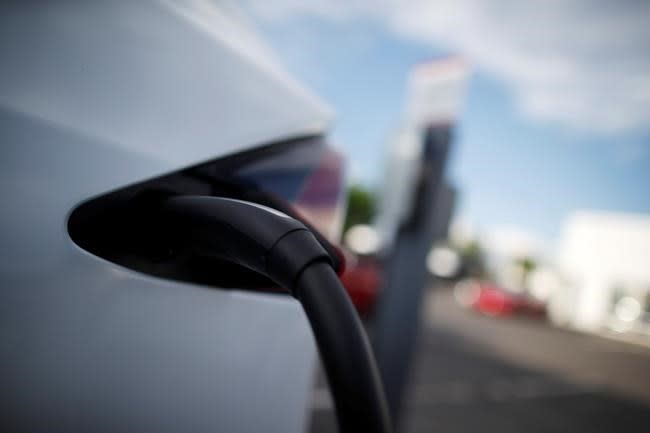Electric vehicle ranges drop by 41 per cent in cold temperatures: study

A new study has found that cranking the heat in an electric vehicle when the temperature outside drops below zero degrees drastically reduces the car’s driving range and can add significant energy costs.
The study, conducted by AAA in the United States, tested five popular electric vehicles in three different temperatures, with and without the use of heating, ventilation, and air conditioning (HVAC) and found that when the temperature dips to -7 C (20 F), the average driving range is decreased by 41 per cent. That means that if an electric vehicle driver is running the car’s heating system and driving in the cold, the range will drop 59 miles for every 100 miles travelled.
“The research clearly shows that electric vehicles thrive in more moderate climates, except the reality is most Americans live in an area where temperature fluctuates,” Megan McKernan, manager of Automotive Research Center, said in a statement.
“Automakers are continually making advances to improve range, but with this information, drivers will be more aware of the impacts varying weather conditions can have on their electric vehicles.”
The study looked at five electric vehicles popular in the United States – 2018 models of the BMW i3s, Chevrolet Bolt, Nissan Leaf, and the 2017 models of the Tesla Model S 75D and Volkwagen e-Golf. For each vehicle, the driving range and fuel economy was tested at -7 C (20 F), 24 C (75 F) and 35 C (95 F), with and without the HVAC system running.
When HVAC is not in use, the driving range for electric vehicles is more moderately impacted. The range decreases by 12 per cent in -7 C (20 F), and a four per cent decrease in 35 C (95 F).
The researchers concluded that using your HVAC system is in the winter also comes with a significant cost penalty. Turning the heat on in -7C weather increases the cost of driving by 65 per cent, or an additional $24.27 for every 1,000 miles driven. This is vastly more than turning on the air conditioning in hot temperatures. The study found at 35 C (95 F), the cost increase was 21 per cent, or an extra $7.94 for every 1,000 miles.
The study concludes that electric vehicle owners should be aware of environmental conditions and plan for reduced range during periods of hot or cold temperatures. Drivers should also try to limit HVAC use to minimize the impact on driving range, and understand that during periods of cold weather, using heat may significantly increase energy costs.
“As long as drivers understand that there are limitations when operating electric vehicles in more extreme climates, they are less likely to be caught off guard by an unexpected drop in driving range,” Greg Bannon, AAA’s director of Automotive Engineering and Industry Relations, said in a statement.
Download the Yahoo Finance app, available for Apple and Android.

 Yahoo Finance
Yahoo Finance 
